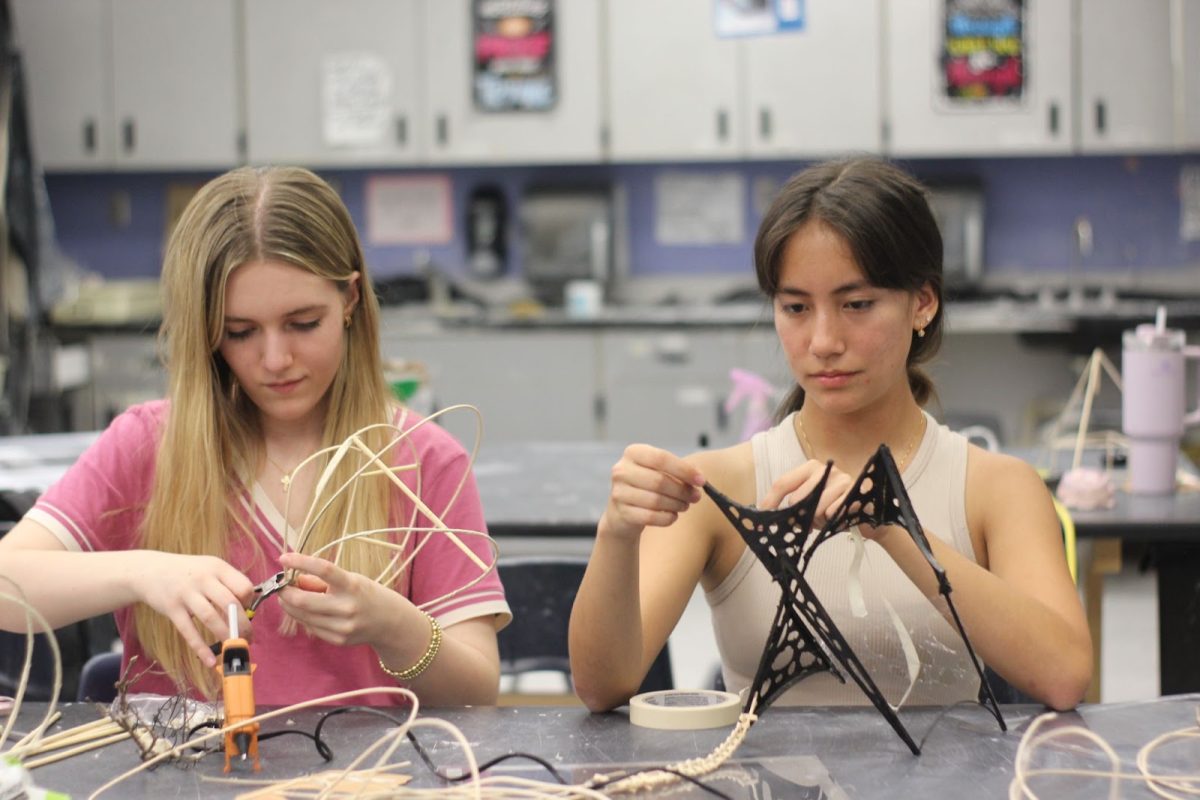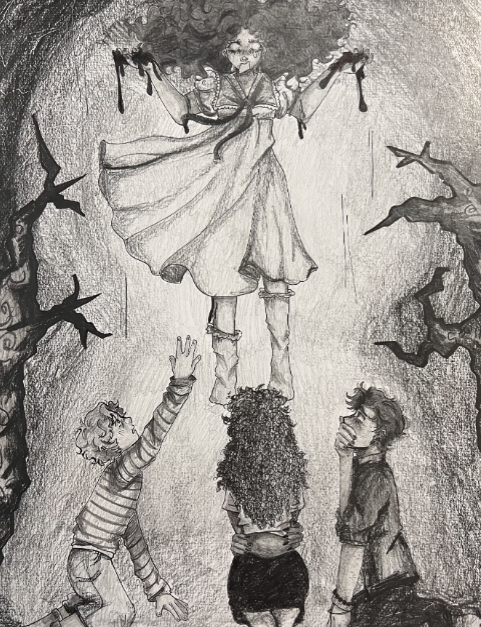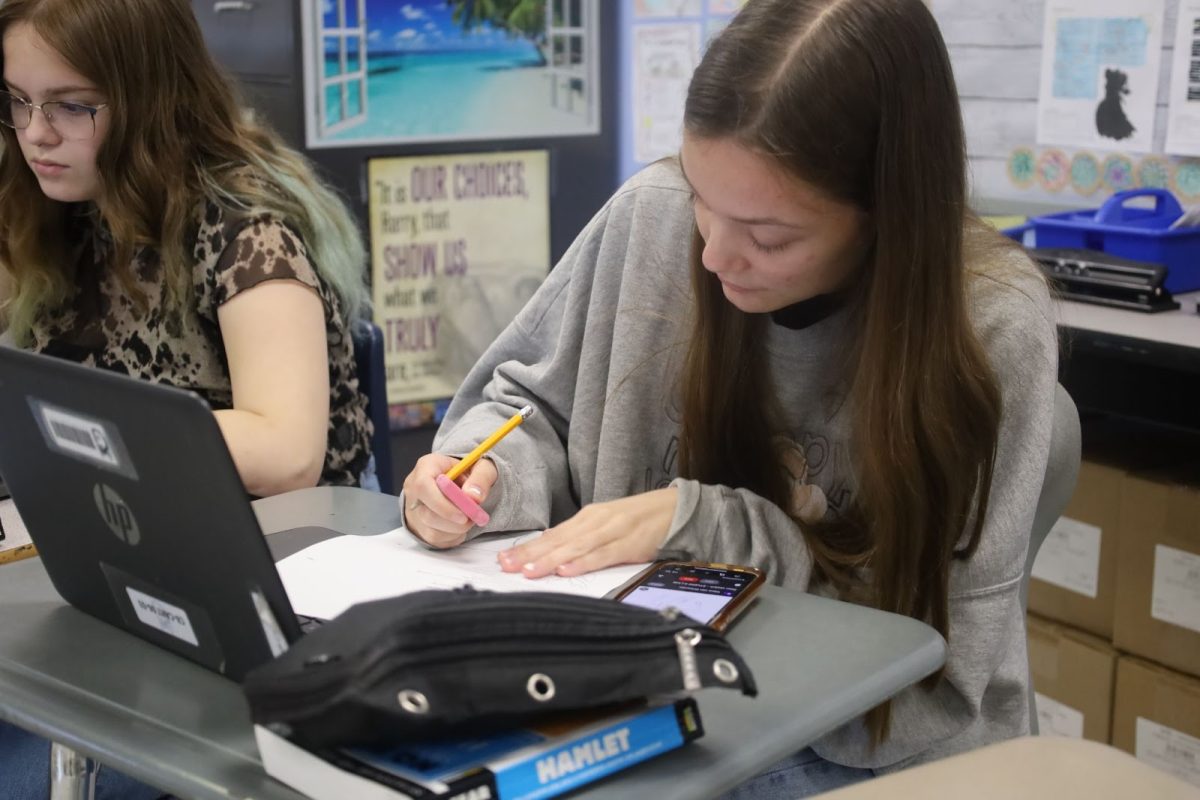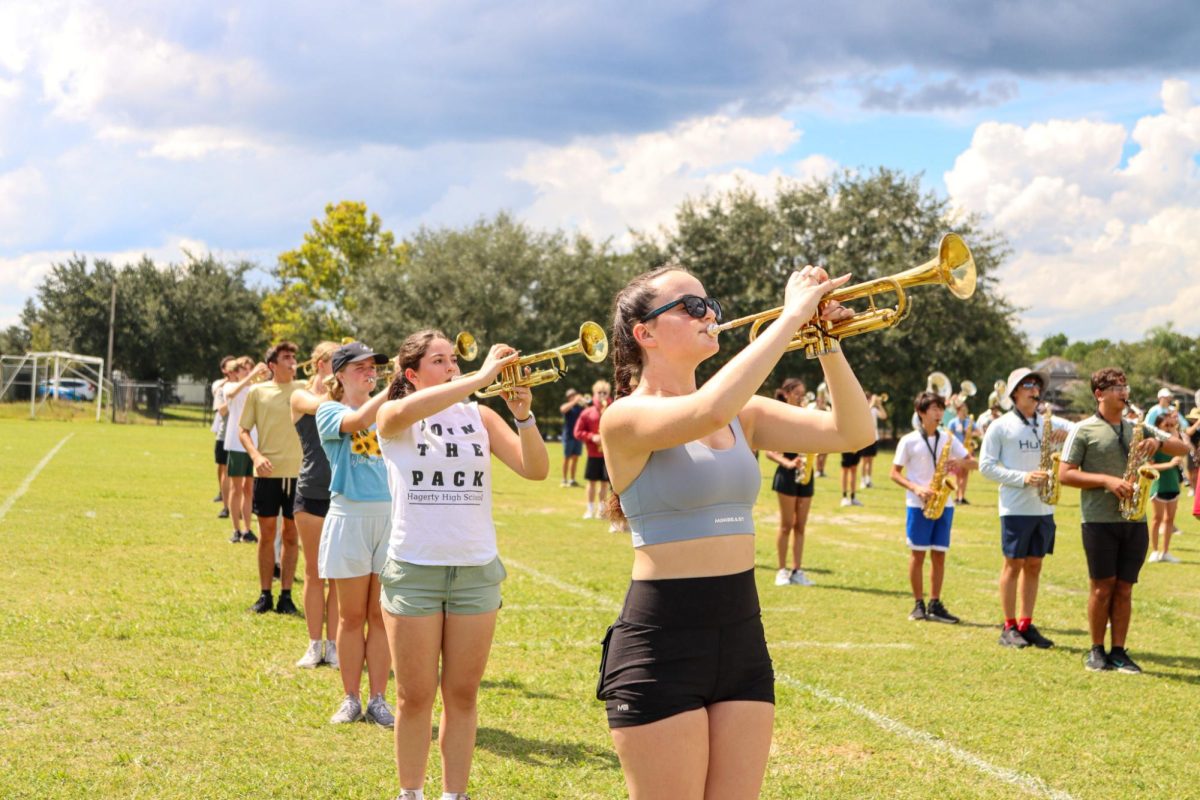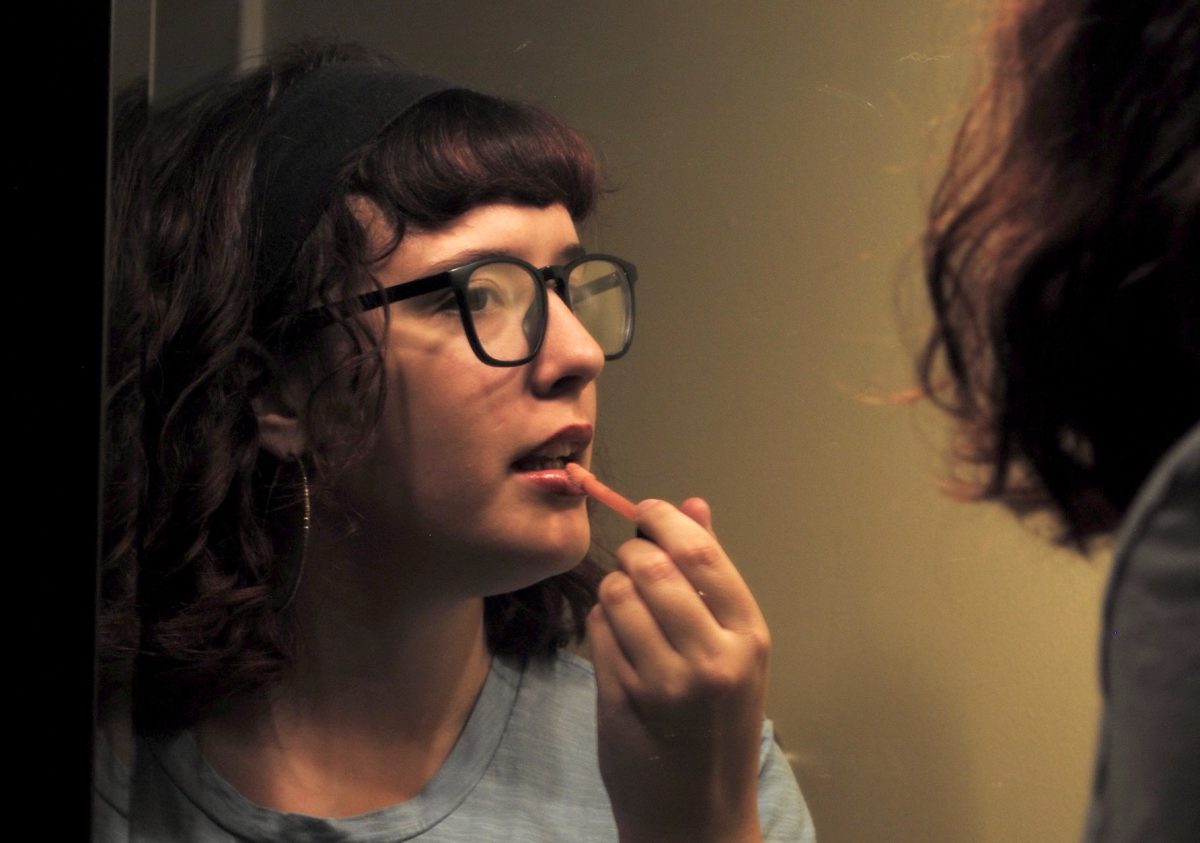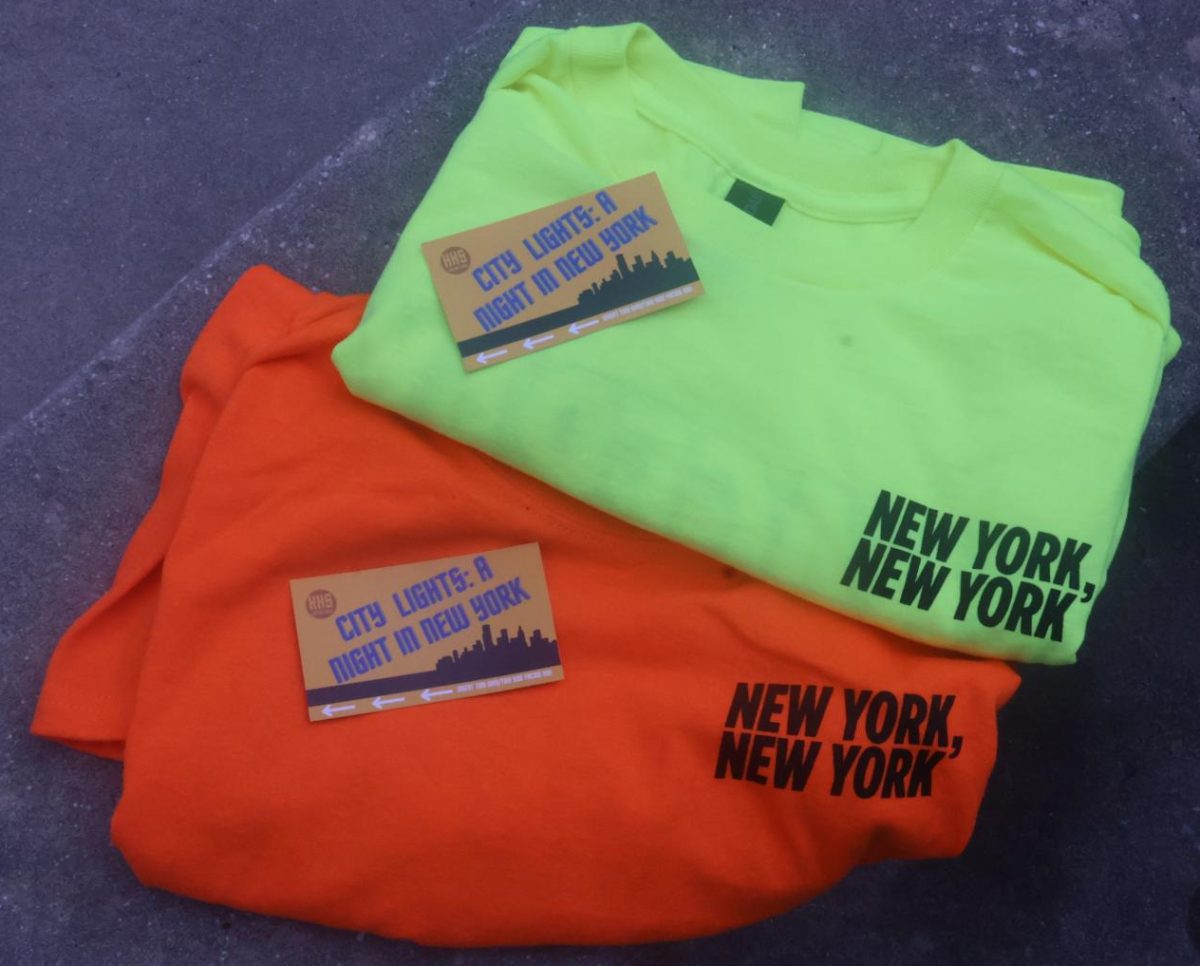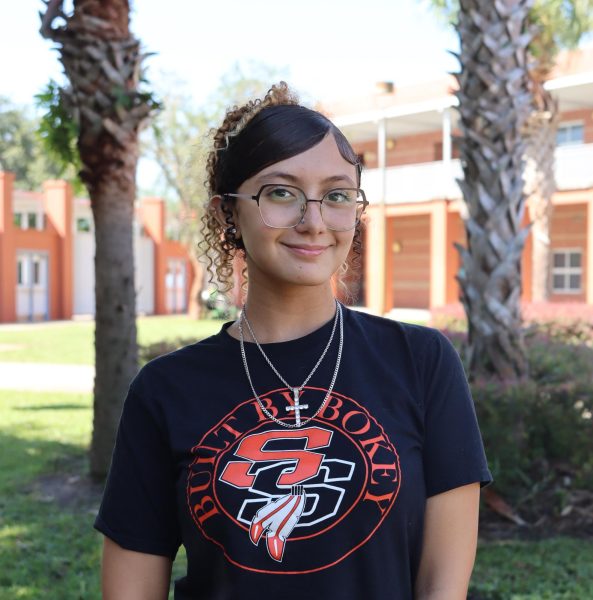Junior Jimena Chumpitaz used alcohol markers and highlighters to create a vibrant piece that was taller than her, a large grey man with a melancholy face squeezing a brain in a world full of colorful bright patterns.
This assignment was one of the many that students have to make in AP art courses in order to get more familiar with art for their portfolios.
AP art courses are unlike any other AP course. Instead of scantrons and essays, there are canvases and colors. For these classes, students have to choose a theme that they want all their art pieces to revolve around, and students create a guided question, their theme, that is represented in all their artworks throughout the year.
Students who take this course are passionate about art and usually want to pursue a career within the field. Chumpitaz wants to be a 3D animator and is going to Ringling College of Art and Design.
“Animation is one of the most successful art related jobs, so that’s my best shot at doing both something I’m passionate about and can also make me money,” Chumpitaz said.
Some students have taken other AP Art classes before, like junior Taylor Conley, and wanted to challenge themselves by taking this course. Other students think of the class as a creative break from traditional classes.
“I chose this class because I enjoy drawing and painting,” junior Gabriella Veltri said. “It gives me a creative outlet when I’m feeling down. It’s fun, and the extra credit is a nice bonus.”
Unlike most AP classes, the AP Art final exam is not two-hours long; instead, students work throughout the year on their portfolio, due May 9. The exam is split into two parts: the Sustained Investigation and Selected Works.
Sustained Investigation is worth 60 percent of the total exam–The student has to submit 15 digital images that show a deep exploration of their theme within the pieces and document their process of making these pieces in writing. For the Selected Works portion, students have to submit five of their best digital images, which can be the same images from the first part, and five artworks. The exam is the same for all three AP art courses, however, AP 2-D and 3-D art are graded mainly on the concept while AP Drawing is graded by actual drawing skills.
However, students do not just spend the whole year working on their portfolio. AP Art teacher Omar Otero gives them assignments with different limitations to enhance their abilities in art.
“I try to do opposites so they get a little bit of everything. If you do stuff like that, it really forces them to expand their creativity,” Otero said. “I made them use alternatives to paint. So they would take coffee, food coloring, crushed flowers or stuff like that. We’ve done a little bit of everything.”
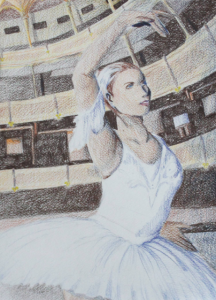
Veltri’s theme was losing passion for art. She used many mediums, like painting, drawing and charcoal, to emphasize her theme in her pieces. Her theme is displayed in her art through the expressions on the subjects faces and in the setting.
“I chose this because it’s a fear I’ve had for years. Quitting art would be letting myself down,” Veltri said.
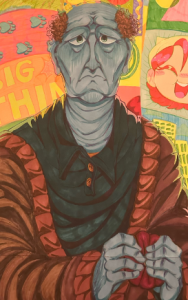 Feelings of inadequacy was Chumpitaz’s theme. She struggles with imposter syndrome, which causes people to feel like they are not good enough to complete certain tasks. She feels she can express it well through her art, since she has a strong grasp of the topic.
Feelings of inadequacy was Chumpitaz’s theme. She struggles with imposter syndrome, which causes people to feel like they are not good enough to complete certain tasks. She feels she can express it well through her art, since she has a strong grasp of the topic.
“I like to show myself more through the colors I use. I really like vibrant colors, bright colors, and a lot of big scenes. I suppose I don’t really like portraits too much,” Chumpitaz said.
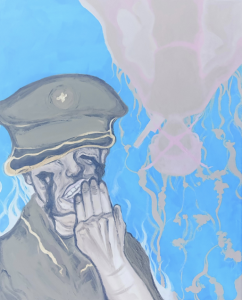
Inspired by her dad’s experience in the army, Conley’s theme was The harsh realities of war. She wanted to make her portfolio about the harrowing aspects of American war and how it is full of tragedy, death, and destruction.
I incorporate a pattern of dramatic, vivid hues into each piece. I also utilize the principles of art when painting the soldiers in my pieces as they are often the focal point within each setting,” Conley said.“ The haunted expressions in the faces of those illustrated in my works evoke a recurrent sense of dread in the viewer.”
Students enjoy the fact they complete control over their art pieces. The rubrics are vague which allow students to enter their own realm of art, rather than following strict assignments.
“If Mr. Otero can tell that you’re serious about what you’re doing, he’ll give you more time. He’ll trust that you’ll be able to turn it in at a normal rate as long as you don’t flake off or anything,” Chumpitaz said.
Since this is an art class, students have not had much practice with the writing portion of the exam. Otero researched what the judges wanted, by asking a previous judge, and went over it with the students.
“Honestly, I winged at the very last second. I just described what I did and the kind of techniques I used. Just write whatever feels right,” Chumpitaz said.
Students say the amount of dedication put into each piece is worth it as it helps them improve their artistic abilities significantly and gives them a better understanding of art in general.
“It’s also a great opportunity to find your niche within the art world,” Conley said. “I would especially recommend this class to anyone who’s interested in pursuing a career in art.”
Selected Works from one AP Art portfolio
Junior Ava Strzalko chose her theme showing what we can learn about the world based on the fears being fed to us because she really adores horror movies and wanted a complete tone shift from her theme last year which was about her childhood stuffed animal. She displays her theme in her artworks by distressed facial expression, blood, and other things related to horror.

